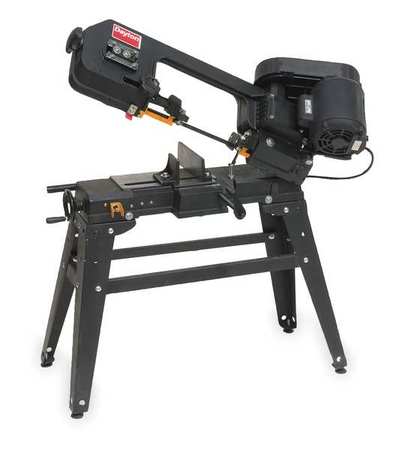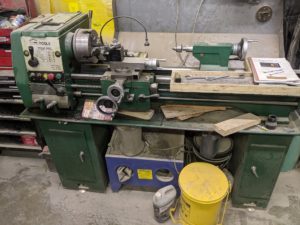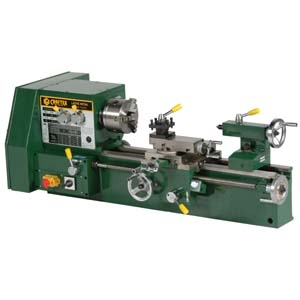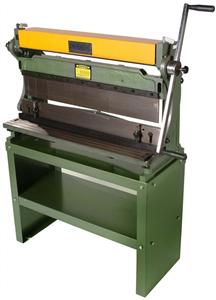Durex Metal Cutting Bandsaw
Specifications
Capacity: 4″ x 6″ rectangular or 4 1/2″ round
Speed: 80, 120, 200 FPM via belt/pulley change
Motor: 1/3 HP, 120V, single-phase 1750 RPM
Blade size: 64 1/2″ x 1/2″ x .025″ or .020″
Auto shut off
Usage
This is a metal-only bandsaw that will cut just about any non-hardened steel, brass, or aluminum. Although it does feature an automatic shutoff when the cut is complete, please do not leave the saw unattended during operation.
The saw can cut any angle between 0 and 45 degrees by adjusting the stationary jaw of the vise. Please return the vise jaw to the standard 0 degree position after use.
Use of cutting fluid is generally not required, but will certainly reduce heat buildup and wear on the blade, especially when cutting steel. If you decide to use cutting fluid, please clean up the mess afterwards, as it will surely puddle on the floor beneath the cut.
Proper tensioning of the blade is essential to prevent cracking and breakage of the blade. The tension knob is on the end of the swingarm, and should only be just tight enough to prevent slippage of the blade on the drive wheel. Making it tighter than this will not improve cutting performance and will in fact degrade blade life. Similarly, downfeed pressure must be carefully adjusted via the straight handle next to the vise wheel so that it’s not heavy enough to bend/bow the blade, nor light enough that the teeth simply skim over the workpiece. Excessive feed pressure can break the blade, insufficient feed pressure dulls the blade quickly.
When cutting material in the saw, always present the smallest cross-section of stock to the blade, while ensuring that at least 3 blade teeth will always be in contact with the material when cutting. Fewer than 3 teeth contacting the material can result in tooth breakage. Too many teeth engaged in the workpiece will prevent satisafactory sawing rate and frequently produce dished cuts or cuts which are neither square nor parallel.
Blade speed is selectable via the belt/pully arrangement between the motor and gearbox. Belt tension must be relaxed to change the belt on the pulleys. Proper belt tension is obtained when there is approximately 1/4″ deflection of the belt using light finger pressure at the center span of the pulleys. When the belt is on the largest motor pulley and smallest gearbox pulley, the speed is 200 feet per minute. When the belt is in the middle of each pulley, the speed is 120 FPM, and when the belt is on the smallest motor pulley and largest gearbox pulley, the speed is 80 FPM. Slower speeds should be used for harder materials, i.e. 80 FPM should be used for tool steel, stainless steel, alloy steels, and hard bronze. 120 FPM should be used for mild steel, hard brass, and medium bronze, and 200 FPM should be used for soft brass, aluminum, and other similar materials.





